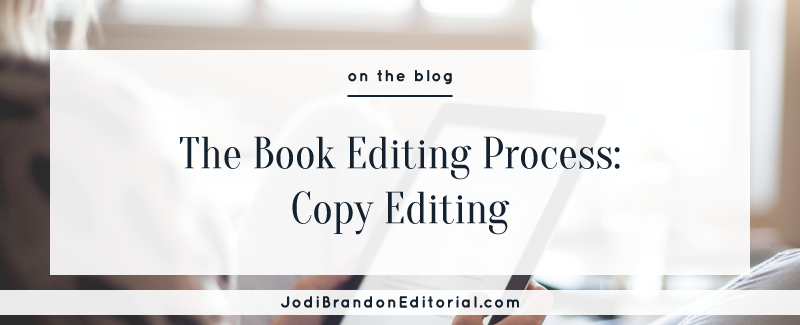The Book Editing Process: Copy Editing
When most people think about hiring a book editor, they’re thinking about a copy editor. A copy editor takes a micro view of your book manuscript and comes into the process once you have a finished manuscript. (A developmental editor, on the other hand, is interested in the bigger picture of your project and works with you during the writing process.)
What Do They DO?
Copy editors take a line-by-line, sentence-by-sentence approach and are interested in:
- Clarity of message
- Grammar/mechanics/word usage/syntax/punctuation
- Consistency (treatment of numbers, verb tense, subheads, etc.)
- Flow
Your copy editor will likely ask you for some background information about your project, such as your ideal audience/target readers, your goals for the book (what do you hope readers take away from reading your book?), and any style preferences you have. For example, it’s standard to spell out numbers through nine and use numerals for 10 and higher. Perhaps you want to use numerals for all numbers. No problem. (Your copy editor’s job, by the way, is to let you know what the standards are, not to force you to follow them.) The information you provide before the editor begins will help them serve your project.
A copy editor takes a micro view of your book manuscript and comes into the process once you have a finished manuscript. - @jodibrandon
The Process
Remember that every editor has their own process, so be sure you’re clear about what your package includes before signing a contract. Some editors include multiple editing passes in their rate, which may be hourly, per page, or per word. Some editors include indexing in their fee. Some create a style sheet and/or heading hierarchy for you to pass along to your proofreader and book designer, respectively. Some deliver your manuscript with an edit memo (sometimes called an editorial letter), whereas others prefer to talk through any issues.
Of most interest to you is that the editor’s process includes tracking their edits (using the “track changes” feature in Microsoft Word, for example). I won’t lie: This step can be tedious, but it’s critical that you have ownership of the text. If you put two spaces after a period, your editor will likely take care of that (deleting the extra space; you only need one) before turning on “track changes.” Why? Because you likely have thousands of sentences in your manuscript and there’s no point in mucking it up with all of those markings.
A Rose by Any Other Name…
You might also hear a copy editor called a line editor.
Copy Editing vs. Proofreading
Nope. A lot of book publishers these days use the term proofreading incorrectly. Strictly and technically speaking, proofreading means to “read against the proof.” A proofreader would sit with two documents side by side: the source document, marked with corrections, and the proof. He or she would compare the two documents. These days, proofreading is a cold read. Here’s the easiest way to remember the difference as an author-entrepreneur: Copy editing occurs before a book is formatted. Proofreading occurs after.
Copy editing occurs before a book is formatted. Proofreading occurs after. - @jodibrandon
Let me know in the comments: Have you hired a copy editor before? What was the best part of working with him or her?


